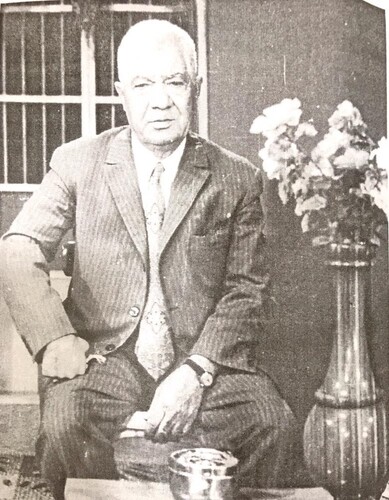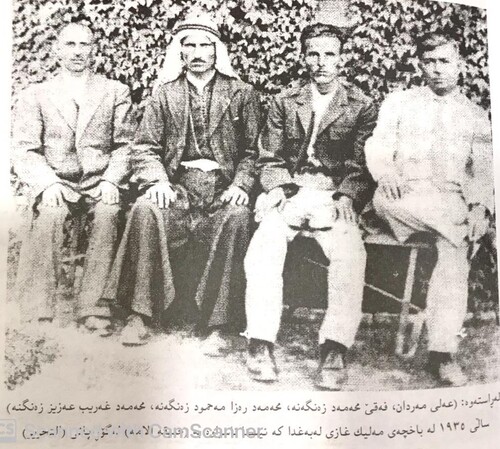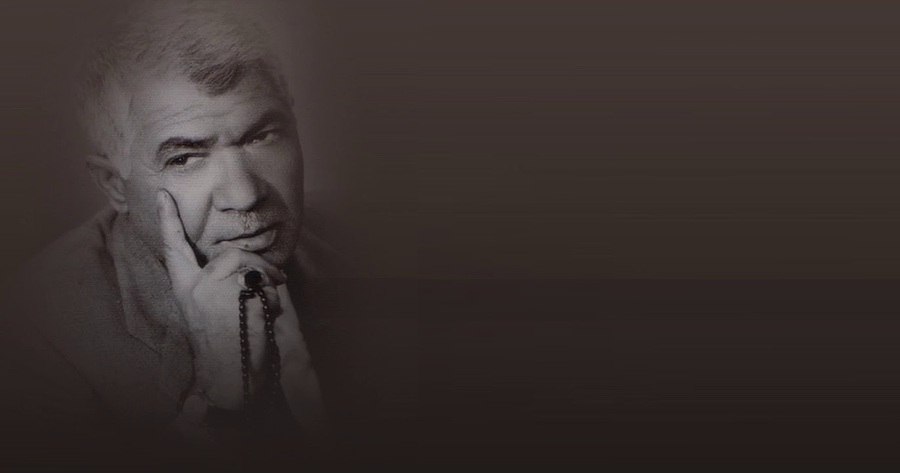Read the first part of this article here
As it is clear from Ali Mardan's autobiography, since this artist had lived in the "Sheikh Ali Talabani Takya" neighborhood in Kirkuk and due to his frequent visits to the Takya and getting to know Quran narrators and those who had memorized it completely, he was introduced to music. Obviously, those who chant the Quran and other religious songs follow a special tradition in their chanting and singing that they have learned from their previous generations and their method in chanting Quran verses, among various narrators of the Quran, encourages them to test their voice in various musical rhythms and melodies. In addition to this, music was an important part of most religious ceremonies like Mowloudi (Mohammad Prophet's birthday ceremony) and the graduation ceremony for those who had completed their religious studies. Thus, in the past in Kurdistan, some religious ceremonies have been carried out with religious men who had beautiful voices to chant the Quran and religious songs. Apparently, due to their vocal abilities, their artistic taste, and the poems they would sing, each of these singers and chanters had selected a special type of melody.
As Ali Mardan says himself, from a young age, he did not like to play with other children of his age but rather would have listened to those who chanted the Quran and religious songs. He learned how to use his voice in different conditions. Later, he became a professional Quran chanter and singer of religious songs. He got acquainted with some men via these meetings and parties who had sung Kurdish Maqams like Allawaisi, Qatar, Khawkar, and …

What is interesting in this part of Ali Mardan's autobiography is the presence of women in these religious gatherings. He got to know two women who had memorized the Quran completely. They were two sisters who had beautiful voices and were both known as Mullah: "Mullah Shawkat" and "Mullah Haybat". These two women could chant the Quran and also sang religious songs in various religious gatherings. Ali Mardan learned a lot from them. More importantly, when he was a teenage boy, his father died, so he was forced to move to Laylan village with his family. His uncle's house was in that village. Here, in this village, Ali Mardan saw himself in front of new opportunities. There was a large hall in this village that belonged to Sheikh. Not only did all the people visit that hall, but during the night, professional singers would go there and sing for hours to entertain Sheikh's hall by singing songs and Maqams. Some very prominent singers such as "Khedr Baram Chawash" and "Kamil Tapaloyi" sang there. They sang Allawaisi, Khurshidi, Khawkar, and many other Maqams. Ali Mardan was mesmerized by them. Thus, he would practice those things he had learned from them during the day collecting a precious treasure in his mind. Finally, they heard his voice and were invited to sing in the hall. This is how Ali Mardan found his voice in Laylan village. What Ali Mardan emphasized here was the role of Takya, Khanaqa, that hall, and mosques in helping artists to grow more professional at that time because these religious places were full of professional singers so talented men could learn from them. Although those artists had visited Khanaqa and their lyrics were religious ones, however, their melodies were of those which were common throughout the Islamic countries. These artists had localized these melodies so that they would be suitable for their culture and their voice, with the common lyrics and songs commonly sung in Kurdish areas especially in the Kirkuk region to create something local. The local singers and aesthetic artists of this area and Ali Mardan had used them. According to his autobiography, these songs and Maqams had the most influence on him until he grew up and began his artistic life.

Those little artistic phenomena that influenced him were: the method of singing and following the rhythm, the Quran chanters' melodies, and those who would sing religious songs in the mosque especially Mullah Shawkat and Mullah Haybat in Kirkuk who were two ladies singing and chanting Quran and religious songs. Later in Laylan village, those singers who had sung in Allawaisi, Qatar, Khawkar, and Khurshidi Maqams influenced him greatly. Ali Mardan learned these Maqams from them and prepared to appear as an artist, first in the Kirkuk region. What was added to his life apart from singing was his love for two women when he was a young man in their village. The love he had for these two ladies made him sing love songs instead of religious Maqams. Love became a source to make him express his artistic passion. Finally, Ali Mardan fell in love with his cousin. However, he never could marry her. This love affected his feelings greatly. His uncle disagreed and stopped them from oppressing their love. After that, Ali Mardan left that region and moved to other places, first to a region called "Hafta Ghar".
Here in Hafta Ghar, he began working and had a daily routine, however, he kept his artistic work private. Finally, when a disaster happened to him in Hafta Ghar which was the death of the person who had helped him settle down, Ali Mardan decided to move to a metropolitan place such as Baghdad carrying the great artistic treasure, he had collected in Kirkuk region from the great singers of that area and the villages around Kirkuk; that is, he moved with his chest full of rhythm, melodies, and Maqams. Here in Baghdad, he began to start a new life based on his art and developed Kurdish art by settling and forming his life as an artist. He had learned Kurdish music traditions, rhythms, and forms, now he had moved to a large city like Baghdad so that he could mix his knowledge with a much greater treasure he was learning in Baghdad. He established his artistic character professionally in Baghdad.









